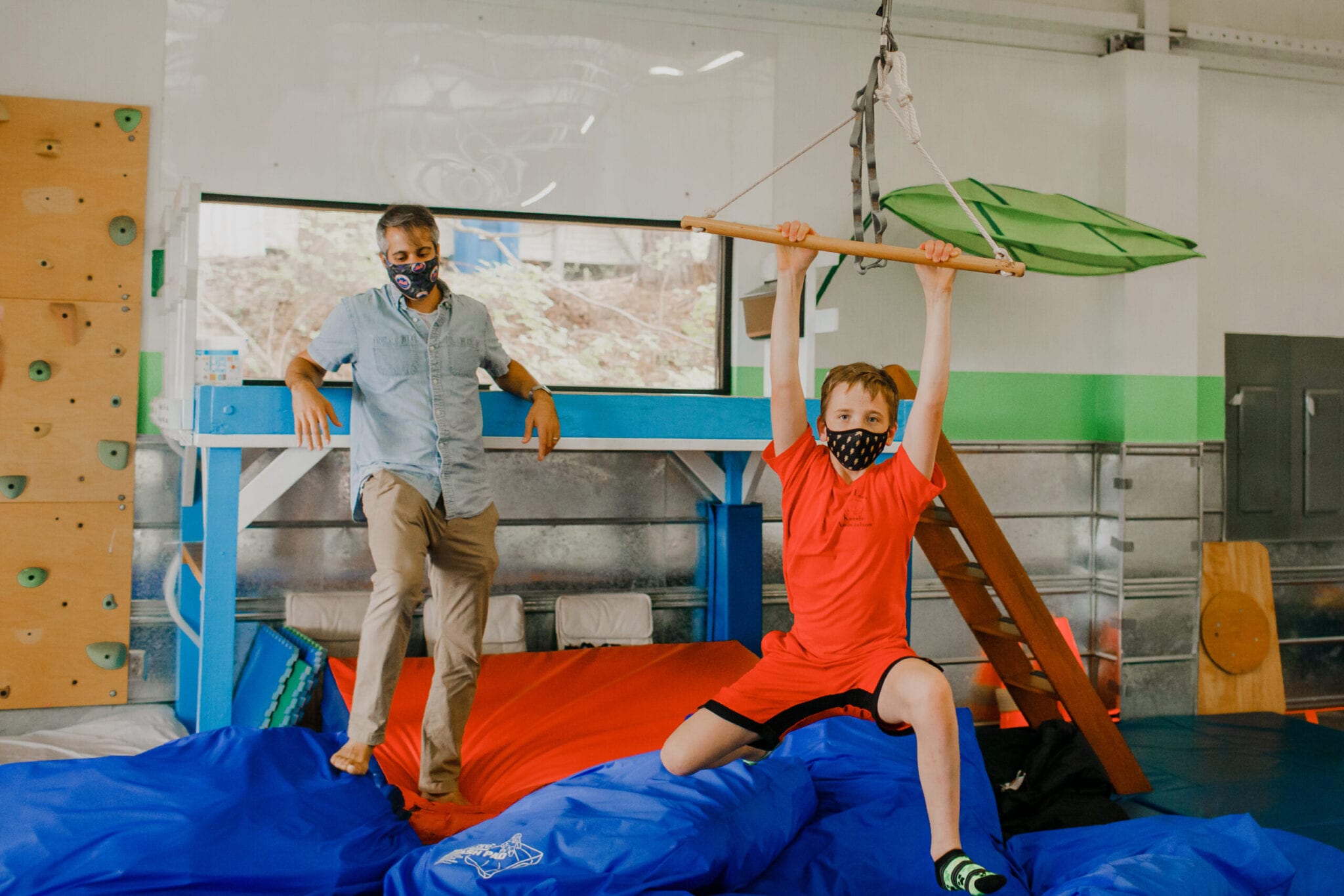
Okay, so as parents, caregivers, grandparents, favorite aunts/uncles, childcare workers, etc. we probably spend a lot of time assessing risk. Our natural instinct is to protect, preserve. This is evidenced by the outlet covers, and baby gates. By the helmets and knee pads. By all the phrases we have yelled from the kitchen, down the hall, or across the play ground. “Don’t run with scissors!” “Use your walking feet” “Keep your bottom in your seat!” “Don’t stand on that!” The list could go on.
But what if we told you that some risk is good for your child? That it can play a big part in your child’s development? We are not talking about all kinds of risk. We are talking specifically about risky play. Risky play, while scary at times for adults, can help children develop self-confidence, problem-solving skills, executive functioning, fine and gross motor skills, social skills, and can help children learn healthy coping skills for anxiety.
One of the core principles of Sensory Integration (the theory that guides OT practice with kids in the Sensory Gym) is that kids learn when provided the “Just Right” challenge. This means that kids often need increasingly difficult challenges to tap into their motivation, provide a sensory-rich experience, and learn new skills. Kids, like many adults, are driven to push their limits and seek new heights.


- Rock walls
- Balance beams
- Trapeze bars
- Moon swings and other swings that require balance
- Scooter board ramps
- Lofted areas suited for jumping
- Monkey bars
- Zip line
How can you support this type of play outside of a well padded therapy clinic? This can be a challenge. We can’t bring tumble mats with us everywhere we go. We can’t keep our eyes on our children at all times. Risky play doesn’t mean there are no rules, guidelines or boundaries. So let’s talk about a few activities and tips to help make risky play possible at home. Brittany Toole wrote a great article about the power of play with a focus on risky play (see the article here). These were some of our favorite tips:
- Shift from a mind set of “safe as possible” to “safe as necessary”
- Provide guidance. This may mean pointing out potential dangers ahead of time to help bring awareness and build their ability to monitor an environment independently one day.
- Practice the 17 Second Rule. Before intervening, wait at least 17 seconds and observe how your child is handling a situation. Are they navigating the risk? Do you need to step in?
- Set boundaries. This is one we like at Emerge and it ties in nicely with providing guidance. There are some activities that are just going to require adult supervision. In the clinic, there are some pieces of equipment that will require an adult to be near by. In those moments, when those pieces of equipment are our, we set boundaries.
“If you want to try the rock wall you can! You need to let me know your plan beforehand. You can try it on your own but an adult needs to be near or know your plan.”

Let’s take our kids to new heights. The sky is the limit! (Disclaimer: Our sensory gyms do not actually reach the sky… but they’re pretty close.)
*The terms danger/dangerous can be used to describe many things. We are not encouraging that children play around or with dangerous things like harmful chemicals, strangers, playing a sport without reasonable safety gear, jumping from high places unsupervised, etc. Risky play will look different for each child, each caregiver, and in each given situation. When it comes to risky play, we have to use our own best judgement and know where our tolerance lies and when to draw a hard line or boundary.

0 Comments